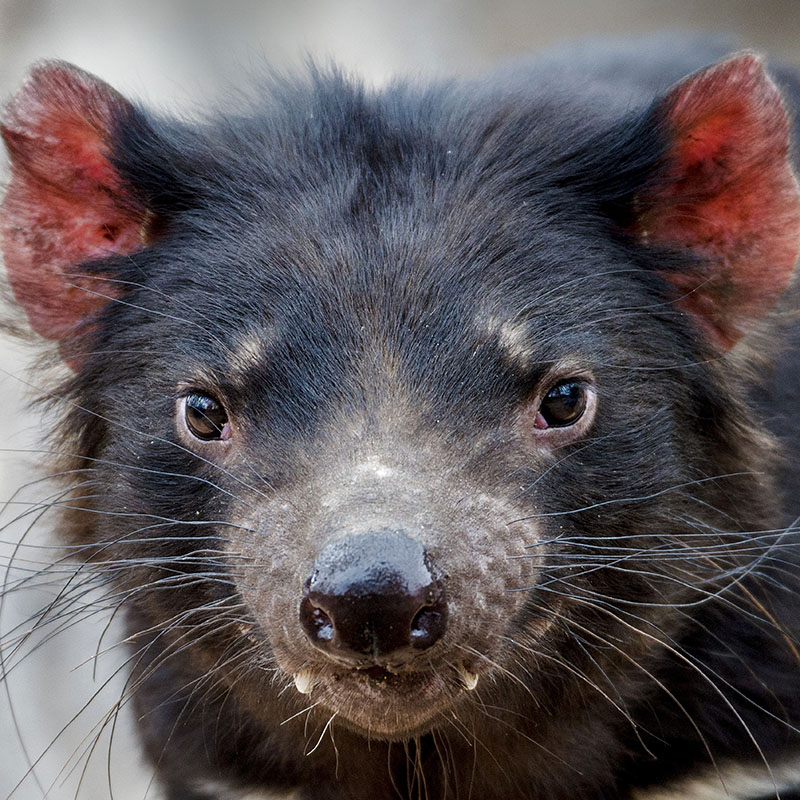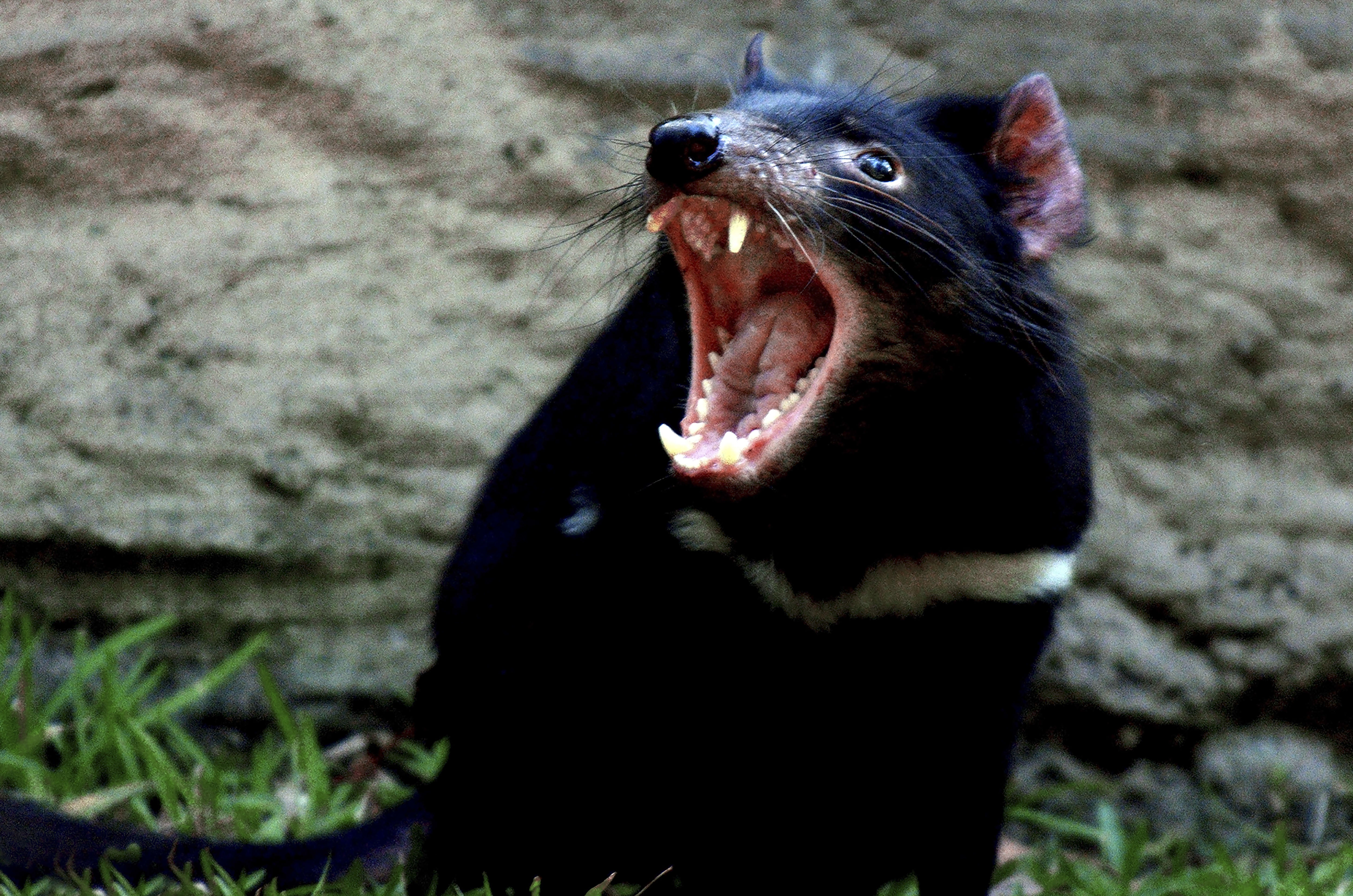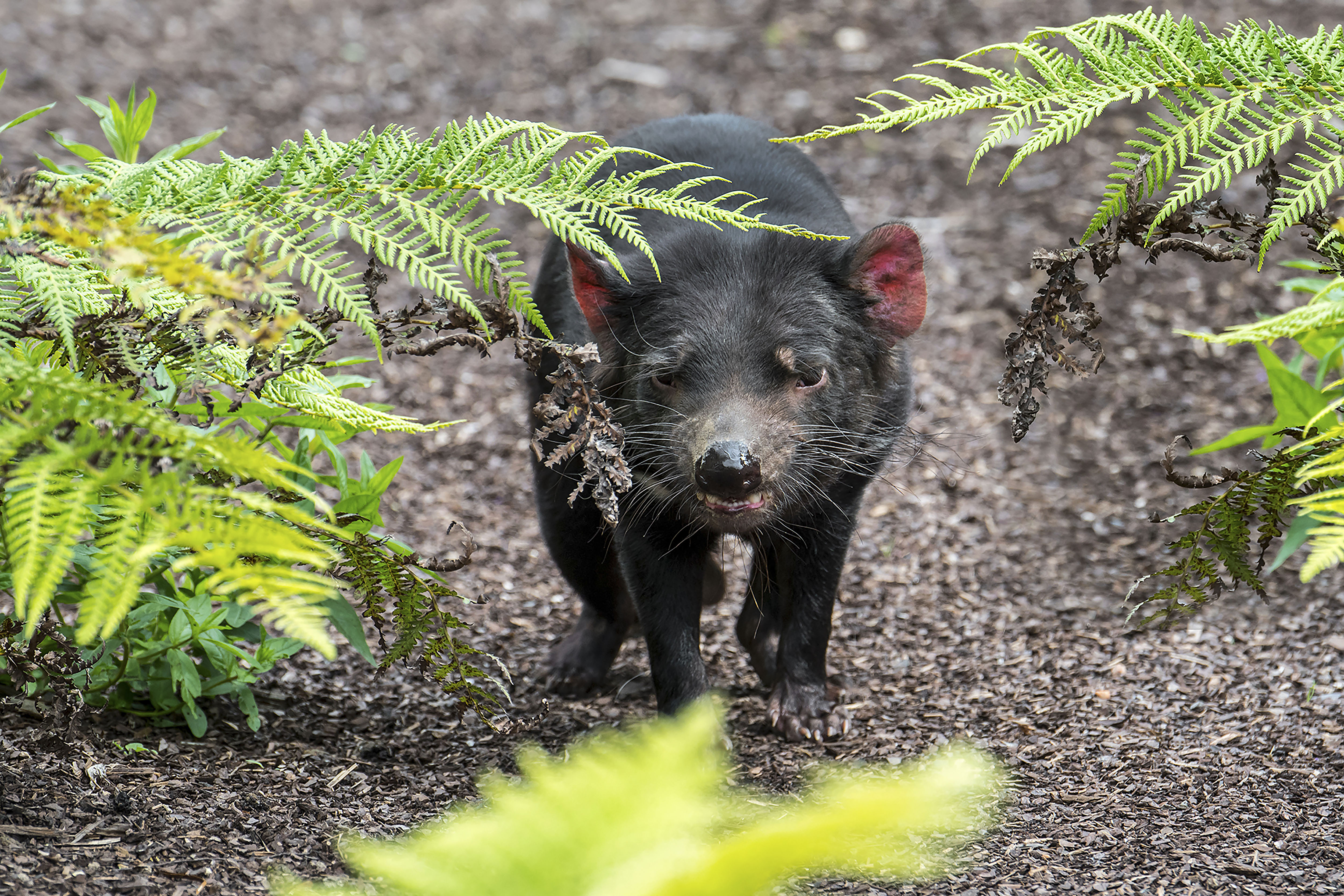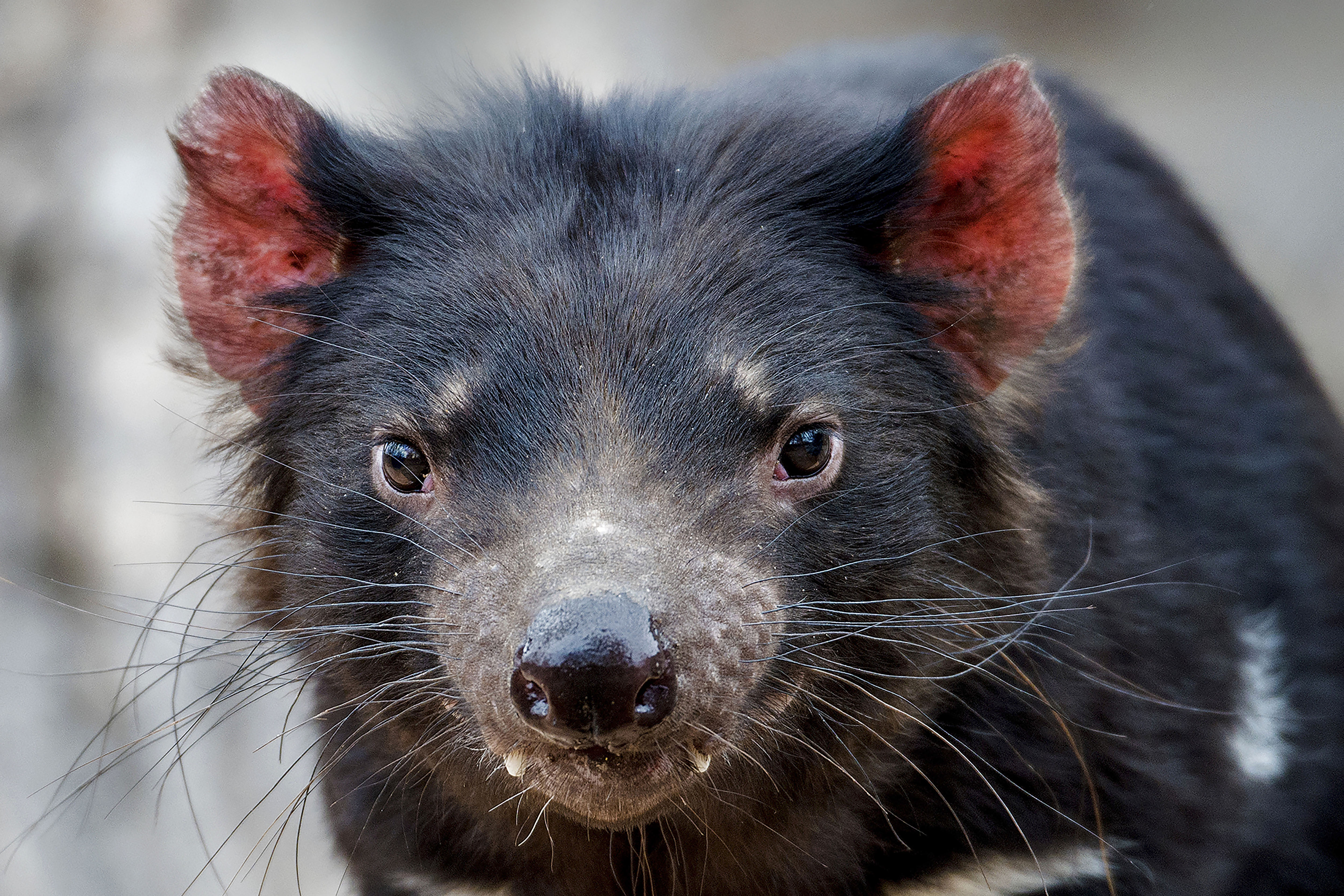Tasmanian Devil
(Sarcophilus harrisii)

Tasmanian Temperate Rainforests
STATISTICS
Length up to
88 cm
Weight up to
12 kgs
Lifespan
5 years
Nocturnal - Solitary - Agrresive - Keen Sight - Sense of Smell - Sharp Hearing
The Tasmanian Devil lives throughout Tasmania, except where there has been extensive habitat destruction. It prefers coastal heath and rangeland areas, and it dens in hollow logs, caves or burrows. This species is stocky with brownish-black fur; it has a white throat patch, white spots on its undersides and a pink snout. Its head is enormous with well-developed jaw muscles. It is adapted for bone-crushing and tearing through flesh with its large molars. The gestation period for a pregnant female is 21 days; litter size is 2- 3 offspring. The young travel to the pouch and remain here for four months. This species is nocturnal and solitary. When in contact with each other at carrion, this species acts aggressively but is not territorial. The Tasmanian Devil vocalizes with grunts, growls, and screeches. It makes its nest with bark and grass in which to rest during the day. The Tasmanian Devil eats the carrion of sheep, wallabies, and rabbits and is an efficient scavenger, chewing bones, and fur. Insects, larvae, snakes, and plants are also sources of food. It uses its sense of smell to find food at night.
BIODIVERSITY BENEFIT
Population Control - Ecosystem Cleaning
THREATS
Persecution
Persecution by farmers for killing livestock.
Habitat Loss and Degradation
Destruction of forest habitat.
Cancer
Facial cancer has devastated populations.
PROTECT THE WILDARK 100




